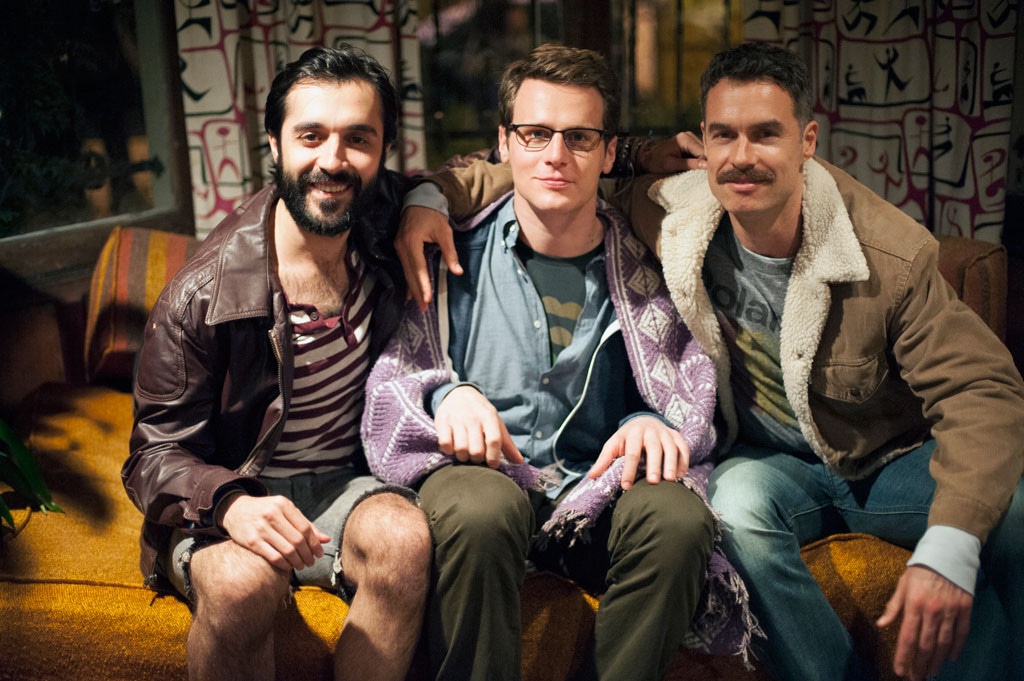 David Moir/HBO
David Moir/HBOWill viewers find what they're looking for in HBO's Looking?
Well, that depends what they're seeking. If you're looking for Queer as Folk part two, you're not going to find it. It's not HBO's gay Girls, either. Nor is it softcore gay porn.
Looking, which hails from Michael Lannan, stars Jonathan Groff, Frankie J. Alvarez, Raul Castillo and Murray Bartlett. We've seen the first few episodes and have the lowdown on what to expect from HBO's new show about gay men in San Francisco.
1. This isn't Queer as Folk 2.0.
"I mean, I think it's different period, obviously. But I think it's very different tonally," director and executive producer Andrew Haigh told the audience at the 2014 TCA panel. "I think the concerns are different. I think stylistically it's very different. I mean, it's obviously about gay people, which that was, too. I think that's probably for me probably the limit of the kind of similarities."
Lannan said while creating the show, they looked at how to accurately portray gay characters in today's modern times, like Queer as Folk was very pegged to its time. "…I think Looking is very much related to this time, which is so different from that," he said.
2. It's not just for gay people. Just because the show follows a trio of gay friends, doesn't mean heterosexual viewers can't access the world and get invested in the story.
"I mean, I wouldn't want it to be a show that's just for gay people and that's it," Haigh told members of the press. "That would be sad for me, so it's definitely, these are gay people. They lead gay lives, but you know, there's a lot more to them than just being gay, and, hopefully, people will see that and feel that."
Series star Groff said the characters have already accepted their homosexuality, which makes it more about them as people, rather than their sexual orientation.
"I think, too, the fact that this show is mostly characters in their 30s and 40s who aren't grappling with the fact that they're gay—all the characters are gay, but that's not the big issue in their lives. They've already gone through that time in their life, so it's not like coming-out stories of people dealing with the fact that they're gay," Groff said. "They're dealing with their relationships at work or with their friends or with their significant others...And I think because they're comfortable with their sexuality, it makes the issues of the characters more relatable because their problems are about everyday life."
3. This isn't Will and Grace, not everybody is rich and white. There are a variety of people in various stages of careers and relationships involved.
"I think that was always a goal...to show a group of people with diverse backgrounds, and I'm really proud of that aspect of the show because I think that's a very real part of life when you're dating someone who is not like you, who has a different cultural class background, that inevitably creates some problems, and it does matter," Lannan said. "And sometimes it doesn't matter. And so I think it's really fun for us to kind of explore that in the show."
4. There's fluidity and we're not talking the sexual kind. The cast was encouraged to embellish in an effort to make the show more real.
"There was certainly a good level of looseness," Haigh said. "I mean, it obviously was scripted, but we always wanted the actors to feel free to embellish and improvise as they saw fit, and they did, and it just helps. I mean, it helps the spontaneity, helps the realism and the naturalism."
Allowing the actors to have some freedom allowed them to get "underneath the skin of the characters," Haigh explained.
"Fortunately, I think we had really great scripts, so sometimes that made it hard to go off the script because it was really good and you wanted to stay on the script, but having that freedom to be able to do that was really freeing," Bartlett said.
5. San Francisco is just as much a character as the actors. In fact, the city helped the cast bond.
"It was so great. We loved it," Groff said of filming in San Francisco. The three got there early before shooting and hung out in Bartlett's Mission apartment. "So our first night in San Francisco working on the show was actually Murray's birthday, March 20th, and we sat in the back garden of his house and opened up a bottle of wine and stayed up all night sort of talking and getting to know each other, and it was a very kind of quintessential San Francisco experience, and that kind of set the tone for the whole show," Groff said. "We shot at a bar called The Stud, and while we were shooting there, we were like, this is so great, and that weekend, we went dancing at The Stud, so we really immersed ourselves into the San Francisco experience."
After shooting for five days a week, the cast would go out on weekends and do "very bad karaoke, which Jonathan refused to do," Haigh said.
"Karaoke makes me anxious," Groff, a Tony nominee for the musical Spring Awakening, said.
Looking airs Sunday, 10:30 p.m. on HBO.